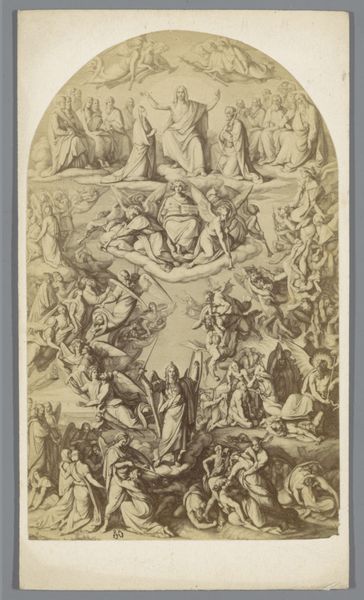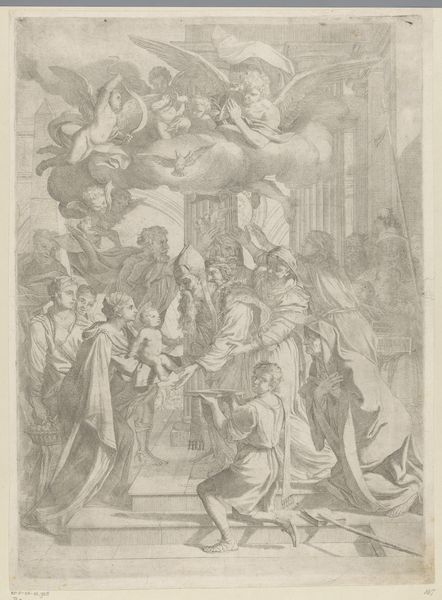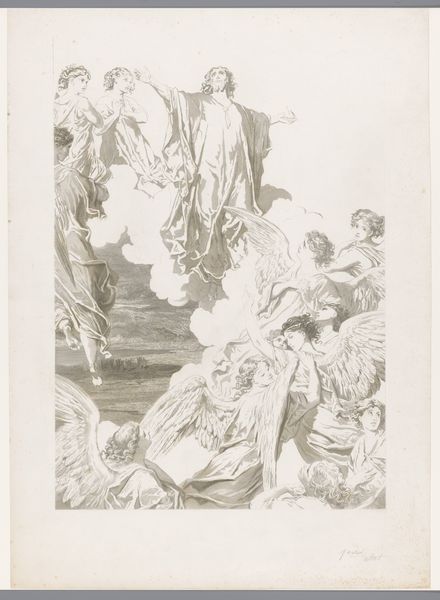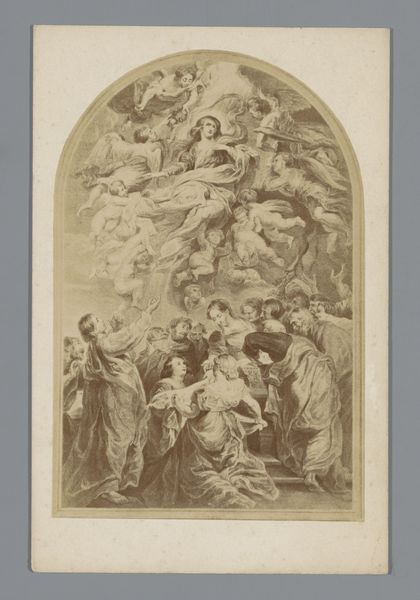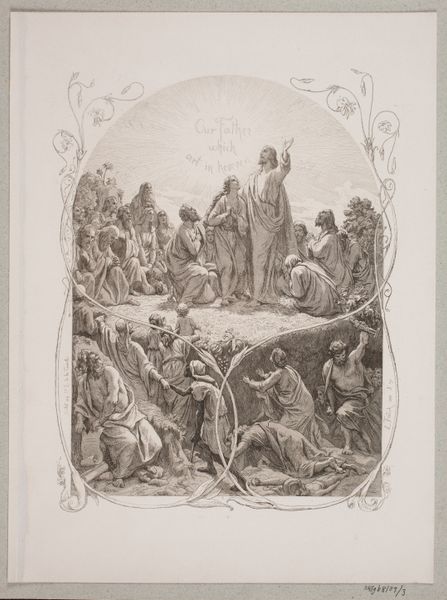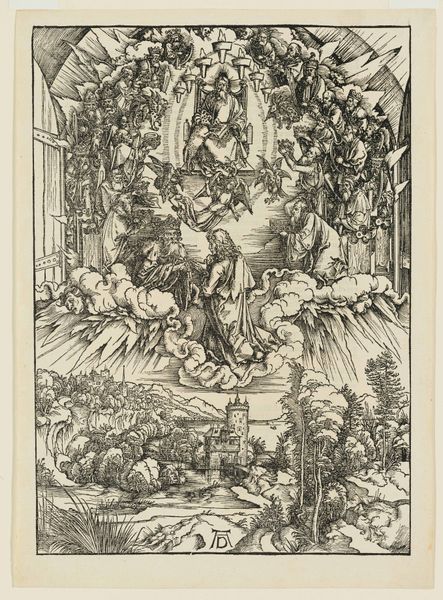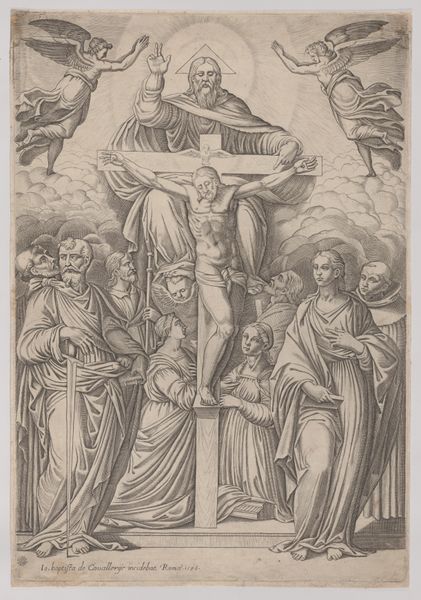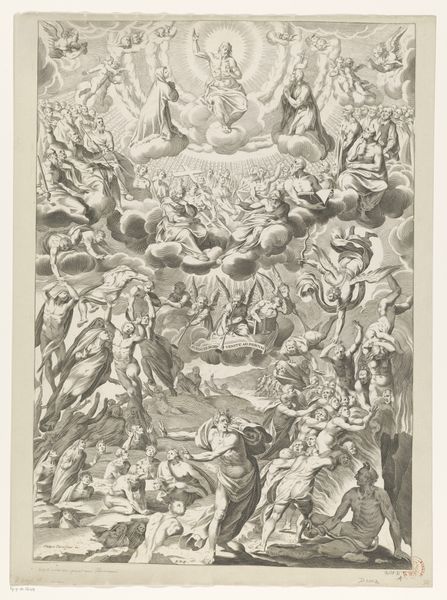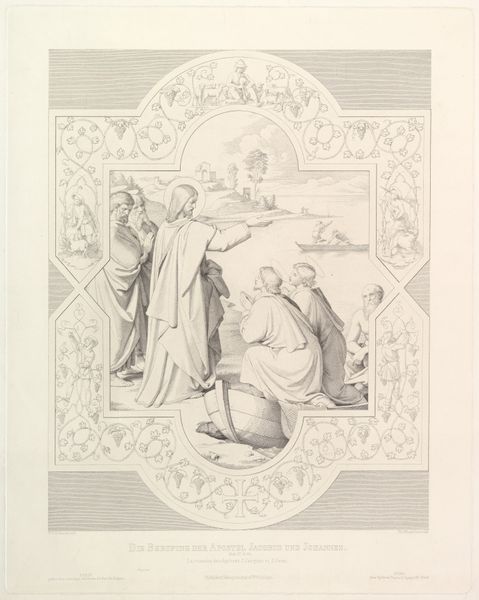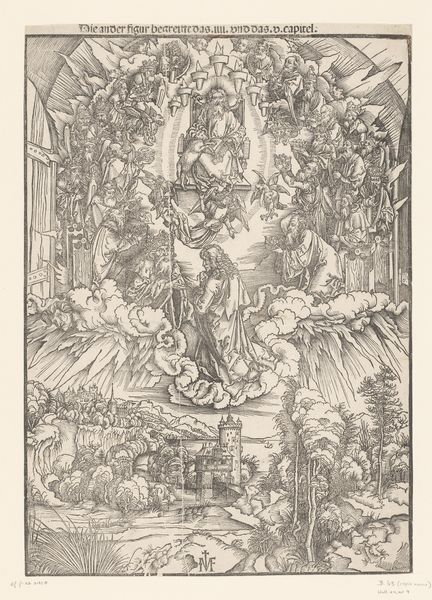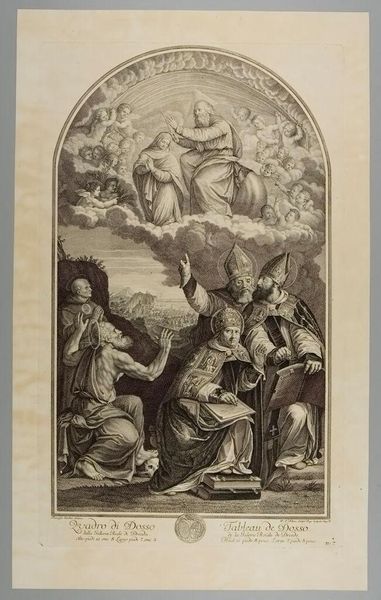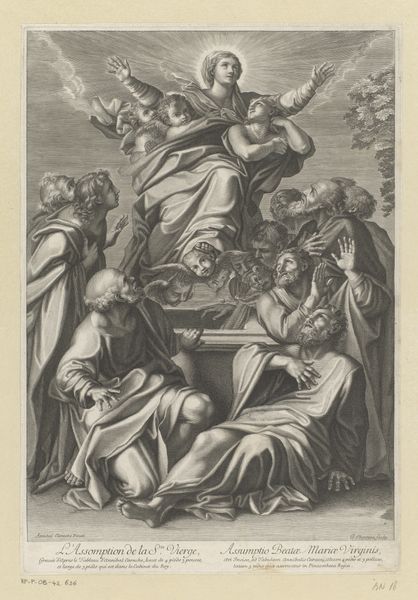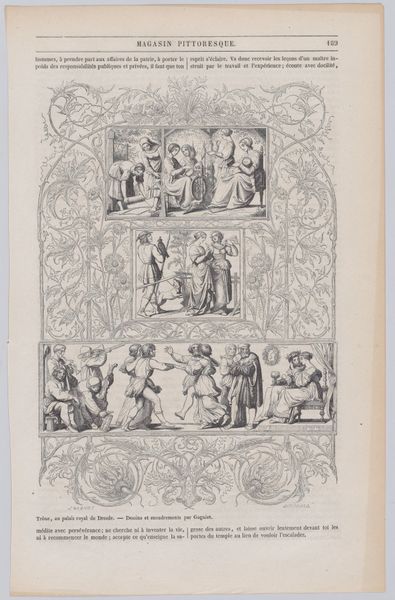
drawing, ink, pencil
#
drawing
#
16_19th-century
#
pen illustration
#
figuration
#
11_renaissance
#
ink
#
group-portraits
#
pencil
#
history-painting
#
academic-art
#
miniature
Copyright: Public Domain
Editor: So, this is Eugen Klimsch's "Die Mitteltafel des Heller-Altares," created around 1871. It’s an ink and pencil drawing, and the level of detail is striking. It gives the image an air of intense focus and, almost, academic observation. How do you interpret this work? Curator: The image depicts a specific moment, drawing upon the visual language of Renaissance altarpieces while created much later in the 19th Century. Considering the social and political conditions of the 1870s, the meticulous nature feels like an engagement with—or perhaps a yearning for—a perceived historical order. How do you see this level of detail impacting our contemporary reading of religious art? Editor: That’s interesting. I hadn’t considered that the date of creation might influence the interpretation. To me, the almost photographic quality invites a focus on the details that, maybe, a painting wouldn’t provide, highlighting the humanity of religious figures that are so often depicted as perfect or idealized. Curator: Absolutely. And within that "humanity", what narratives do you find emerging? Think about gender, class, and the way power is represented, and who has it in the drawing. Editor: Well, it seems traditional. The crowning of Mary is at the very top of the piece and a group of people is present to witness. Yet Klimsch focuses as much on the common people as the Divine ones. Curator: Indeed. The artist appears conscious of contrasting earth with the Divine sphere, yet their interconnection is undeniable, challenging fixed notions of power and sacrality. I feel it opens avenues to address contemporary conversations about power, access and spirituality. Editor: I agree. Seeing it that way makes me appreciate the artist's conscious choices in depicting both realms and their interplay. Curator: Precisely, Eugen Klimsch places both historical painting and miniature aesthetics on dialogue. It’s amazing to perceive such intersection. Editor: I hadn't considered that before. Thanks, that really changed how I see the piece!
Comments
No comments
Be the first to comment and join the conversation on the ultimate creative platform.
